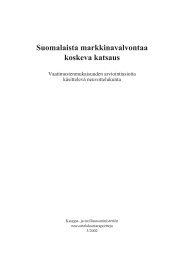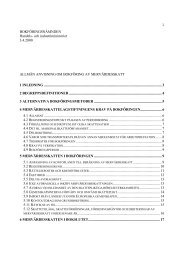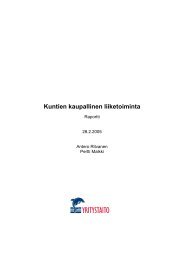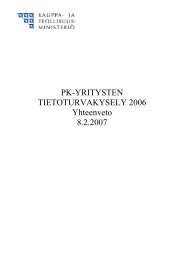Knowledge Intensive Services' Suppliers and Clients
Knowledge Intensive Services' Suppliers and Clients
Knowledge Intensive Services' Suppliers and Clients
You also want an ePaper? Increase the reach of your titles
YUMPU automatically turns print PDFs into web optimized ePapers that Google loves.
49<br />
These seem to be highly promising approaches to better underst<strong>and</strong>ing the<br />
(changing) roles of KIBS – <strong>and</strong> perhaps to add some much-needed depth to analysis<br />
of the knowledge-based economy.<br />
3.2.2 <strong>Knowledge</strong> management in KIBS<br />
Hansen et al (1999, pp108) argue that “because knowledge is the core asset of<br />
consultancies, they were among the first businesses to pay attention to <strong>and</strong> make<br />
heavy investments in the management of knowledge”. But some firms do<br />
extensively use IT-based <strong>Knowledge</strong> Management systems. In a small set of case<br />
studies of large US firms. Including health care services <strong>and</strong> especially<br />
consultancies, Hansen et al, (1999) report on more established use of such systems.<br />
They note two main successful use strategies, arguing that while a mixture of the<br />
two is common in practice, companies have to decide to make the one most<br />
appropriate to their core services the centre of their strategy. They suggest that a<br />
balance of roughly 80/20 is effective.) The two strategies are:<br />
• Codification. Information systems are established to enable rapid reuse<br />
of information resources (presentations, templates, algorithms, etc)<br />
developed by staff. Aim to reuse these assets many times, providing<br />
minor variants of relatively st<strong>and</strong>ardised solutions to frequentlyencountered<br />
client problems.This makes it possible for there to be<br />
relatively many junior <strong>and</strong> few senior staff (associates <strong>and</strong> partners,<br />
respectively), often working in large teams <strong>and</strong> generating large overall<br />
revenues. Incentive structures need to reward contributions to the pool<br />
of knowledge assets.<br />
• Personalisation. Information systems are more oriented to facilitating<br />
communication among members of staff, who typically work on<br />
challenging problems with many new features, requiring bespoke or<br />
highly customised solutions.Work is executed through high ratios of<br />
senior as opposed to junior staff, working at high fees with a focus on<br />
high profit margins rather than volume of business. Systems are<br />
developed to allow individual expertise to be located <strong>and</strong> consulted (<strong>and</strong><br />
to exercise oversight) as appropriate. Incentive structures need to reward<br />
contributions to other’s problem-solving.<br />
In each case we might anticipate that the use of IT-based systems will lead to more<br />
rapid internal diffusion of innovations in service products <strong>and</strong> processes. Whether<br />
the codified strategy may suppress the original generation of innovations, however,<br />
by encouraging reuse of earlier work <strong>and</strong> thus – while limiting needless redundancy
















